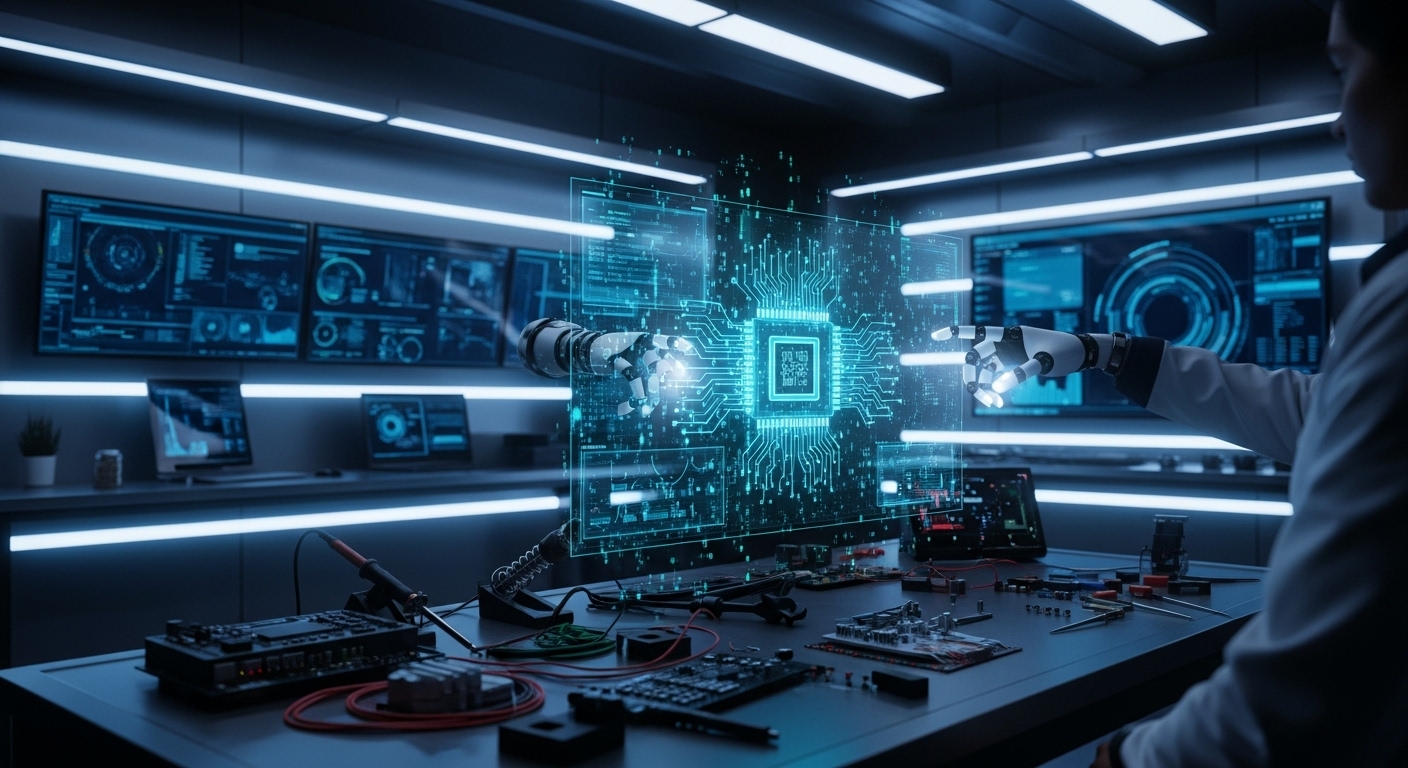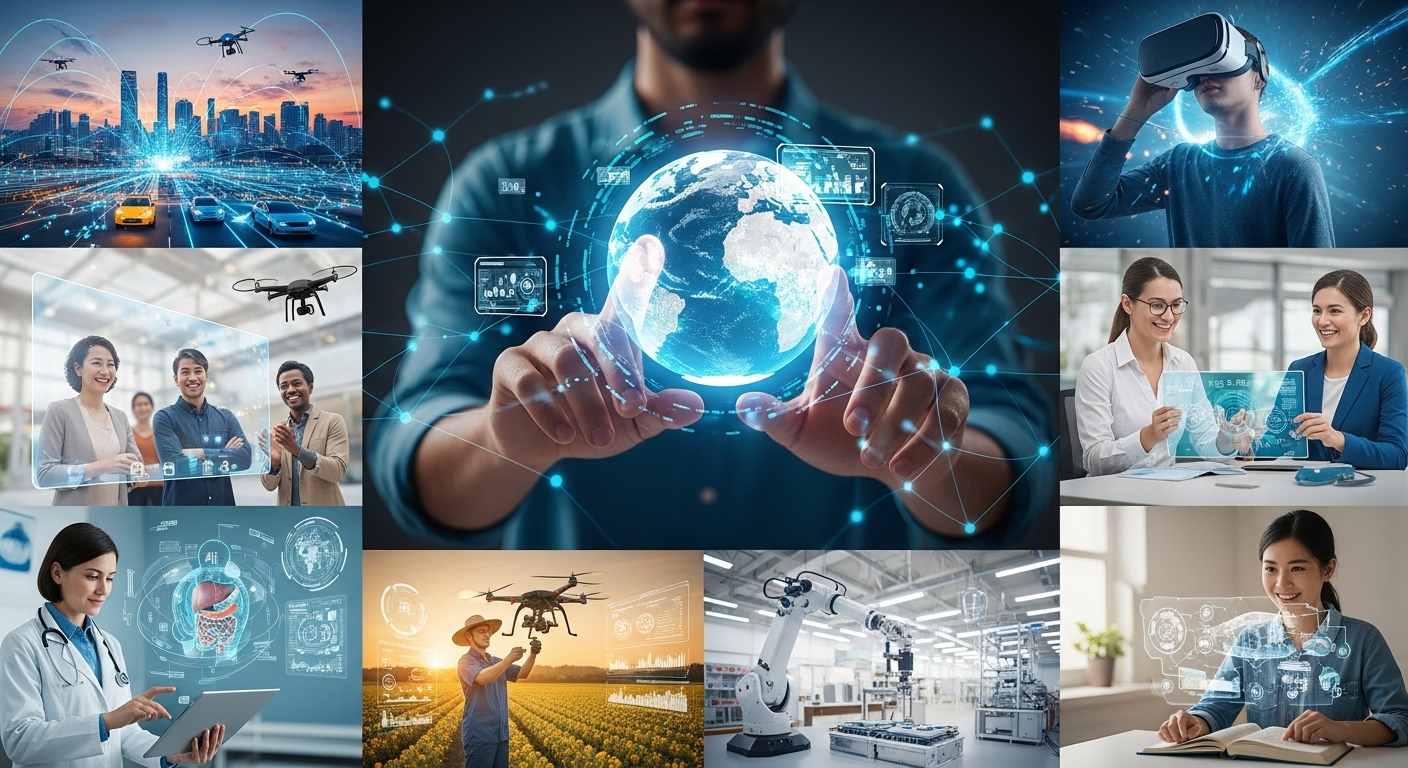Artificial Intelligence (AI) is no longer a distant dream or something straight out of science fiction movies. It is here, evolving at an unprecedented rate, and impacting nearly every facet of our lives. From self-driving cars to personalized shopping experiences, AI has permeated the fabric of modern society, transforming industries, businesses, and the way we live. In this blog post, we’ll take a deep dive into the future of AI, explore current trends, examine the challenges we face, and discuss the opportunities it presents.
The Rise of Artificial Intelligence: A Brief Overview
Before looking at the future, it’s essential to understand how AI has evolved over the past few decades. In the early stages, AI was merely a concept, with early research in computer science and machine learning (ML) forming the basis for its development. The journey of AI started with fundamental tasks like rule-based systems and expert systems that relied on predefined knowledge and rules. Fast forward to today, and we see AI systems that are capable of learning from vast amounts of data, making decisions, and even outperforming humans in certain areas.
Machine Learning and Deep Learning are two subfields that have revolutionized the AI landscape. Machine Learning involves algorithms that allow machines to learn from data without being explicitly programmed, while Deep Learning, a subset of Machine Learning, uses neural networks with many layers to analyze data in more complex ways. These technologies, combined with advances in computing power and the availability of large datasets, have led to the explosion of AI applications across industries such as healthcare, finance, education, and entertainment.
Current Trends Shaping the Future of AI
As we look ahead to the next decade, there are several trends in AI that are set to redefine what’s possible. Let’s explore some of the most significant developments:
1. AI and Automation: Transforming the Workforce
One of the most discussed applications of AI is its ability to automate tasks that traditionally required human intervention. In industries like manufacturing, logistics, and customer service, AI-powered robots and intelligent systems are already handling routine tasks more efficiently and accurately than their human counterparts.
This shift toward automation has sparked both excitement and fear. On one hand, automation can lead to improved productivity and reduced operational costs for businesses. On the other hand, there are concerns about job displacement, especially in sectors where human labor is still highly prevalent. However, the future of AI and automation is not about replacing humans but augmenting human capabilities. By taking over repetitive and mundane tasks, AI allows humans to focus on more complex and creative work.
For example, in the field of healthcare, AI is helping medical professionals make better decisions by analyzing patient data more efficiently than a human doctor ever could. In finance, AI-driven algorithms are optimizing trading strategies, detecting fraud, and assessing risk more accurately.
2. Natural Language Processing (NLP) and Conversational AI
Natural Language Processing (NLP) is a subfield of AI that focuses on enabling machines to understand, interpret, and respond to human language in a way that feels natural and intuitive. The past decade has witnessed impressive strides in NLP, with virtual assistants like Siri, Alexa, and Google Assistant becoming commonplace in our daily lives. These systems are increasingly capable of understanding context, sentiment, and even complex queries.
Looking ahead, conversational AI is set to become more sophisticated. Chatbots will become more human-like, offering personalized recommendations, resolving issues, and answering questions with greater accuracy. Businesses will increasingly rely on conversational AI to improve customer engagement and support, making these interactions more seamless and less dependent on human agents.
Moreover, AI-powered translation tools are improving at an extraordinary rate, making real-time, multilingual communication possible. This is breaking down language barriers and fostering global collaboration across industries, from business to education to government.
3. AI in Healthcare: A Revolution in Medicine
One of the most exciting and impactful applications of AI is in healthcare. AI is helping to solve some of the most complex medical challenges, from diagnosing diseases to developing personalized treatment plans. Machine learning algorithms can analyze medical images, such as X-rays and MRIs, to detect early signs of diseases like cancer, often with higher accuracy than human doctors.
AI is also transforming drug discovery. Traditional drug development is a long, expensive process that can take years, with no guarantee of success. AI, however, can help identify potential drug candidates by analyzing vast amounts of biological and chemical data, significantly speeding up the process. In some cases, AI systems have already been instrumental in discovering new treatments for diseases such as Alzheimer’s and Parkinson’s.
Additionally, AI is enabling personalized medicine. By analyzing genetic data and a patient’s medical history, AI can recommend treatments tailored to the individual’s specific needs. This shift toward precision medicine has the potential to revolutionize the way we treat diseases, offering more effective and targeted therapies.
4. AI and Ethics: A Growing Concern
As AI continues to advance, ethical concerns surrounding its use are becoming increasingly important. AI systems can make decisions based on algorithms that are sometimes difficult to interpret, raising concerns about transparency, accountability, and fairness. In particular, issues like algorithmic bias, privacy, and the potential misuse of AI for malicious purposes are garnering attention.
One of the biggest ethical challenges is ensuring that AI systems do not perpetuate or exacerbate existing biases in society. For example, biased data used to train AI models can result in discriminatory outcomes, such as biased hiring practices or unfair sentencing in the criminal justice system. There is a growing movement within the AI community to create fairer, more transparent systems by addressing these biases and implementing regulations that hold AI developers accountable.
Furthermore, AI’s impact on privacy is another critical concern. With AI systems processing vast amounts of personal data, there are fears about the misuse of this information or its exposure to malicious actors. Striking a balance between the benefits of AI and protecting individual privacy will be a key challenge for policymakers and businesses alike in the coming years.
5. AI and Creativity: Redefining Art and Design
AI has traditionally been viewed as a tool for automating tasks and solving problems, but in recent years, there has been a growing interest in its potential to enhance creativity. AI is now being used to create music, art, literature, and even fashion. Machine learning algorithms can analyze vast datasets of artistic works and generate new, unique pieces of art based on that knowledge.
In music, AI is being used to compose symphonies, produce new songs, and assist in the mixing and mastering process. In the world of visual arts, AI-generated paintings and sculptures have garnered attention for their creativity and originality. Even in fashion, AI is helping designers predict trends and create personalized clothing recommendations.
While some critics argue that AI lacks the soul and emotional depth of human creativity, others believe that AI is simply another tool that can be used to push the boundaries of artistic expression. As AI continues to evolve, its role in the creative industries will likely expand, leading to new forms of collaboration between humans and machines.
The Challenges Facing the Future of AI
While the potential benefits of AI are immense, there are several challenges that need to be addressed before AI can fully realize its potential. Here are some of the key obstacles we must overcome:
1. Data Privacy and Security
AI systems require vast amounts of data to function effectively. However, this data is often personal and sensitive, raising concerns about how it is collected, stored, and used. Data breaches, unauthorized access, and misuse of personal information are significant threats to the widespread adoption of AI. Ensuring robust data protection measures and fostering trust among users will be essential for the future of AI.
2. Lack of Standardization
As AI continues to grow, there is a lack of uniformity and standardization in how AI technologies are developed and deployed. Different organizations use different frameworks, tools, and methodologies, making it difficult to ensure consistency and interoperability across AI systems. Establishing industry standards and best practices will be crucial to ensure that AI systems are safe, reliable, and effective.
3. AI and Job Displacement
As mentioned earlier, AI and automation are transforming the job market. While some jobs will be replaced by machines, others will be created, particularly in the fields of AI research, development, and maintenance. However, reskilling and upskilling the workforce to adapt to these changes will be a significant challenge. Policymakers, educators, and businesses will need to collaborate to ensure that workers are equipped with the skills necessary to thrive in an AI-driven world.
4. Lack of Transparency and Accountability
AI systems, especially deep learning models, are often described as “black boxes” because their decision-making processes are not easily interpretable. This lack of transparency can lead to trust issues, particularly in high-stakes applications such as healthcare, finance, and criminal justice. Developing more explainable AI models that offer insights into how decisions are made will be crucial for building trust in AI systems.
The Opportunities Ahead: Embracing the AI Revolution
Despite these challenges, the future of AI is filled with opportunities. The potential applications of AI are virtually limitless, and the impact it could have on society is profound. By embracing AI and addressing the challenges head-on, we can unlock new levels of innovation, efficiency, and creativity.
1. Improved Decision-Making
AI’s ability to process vast amounts of data and identify patterns can help individuals and organizations make better decisions. In business, AI can optimize supply chains, predict market trends, and improve customer experiences. In government, AI can be used to improve policy-making, manage resources more effectively, and address societal issues such as climate change.




